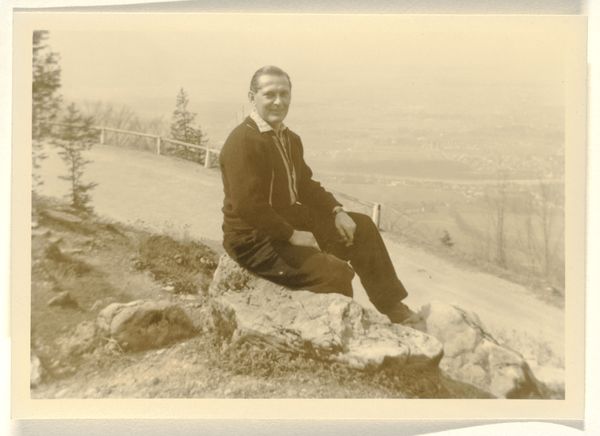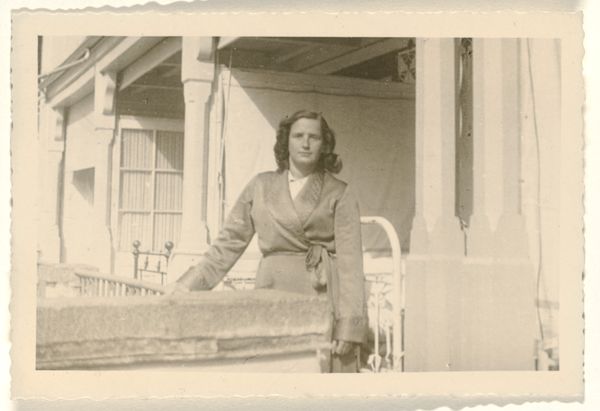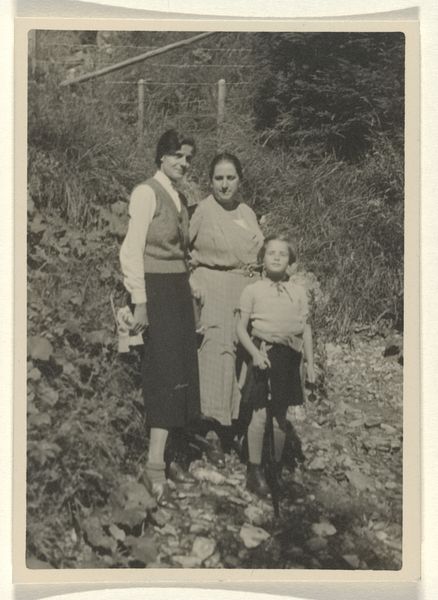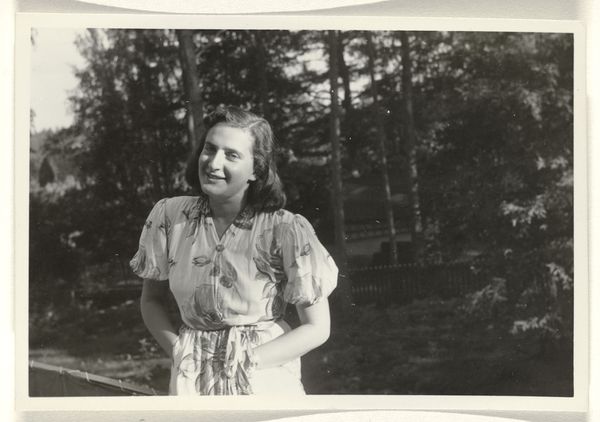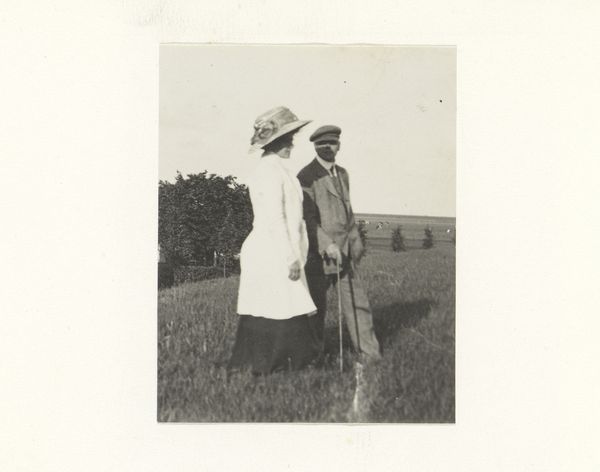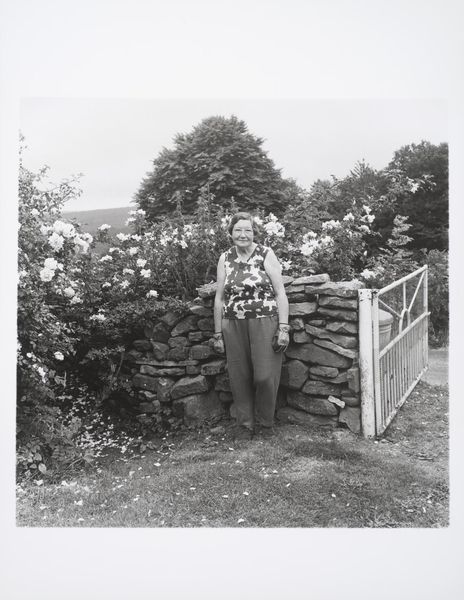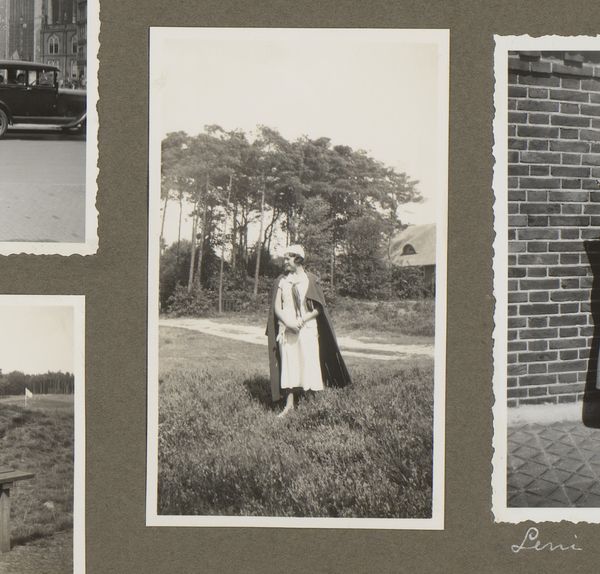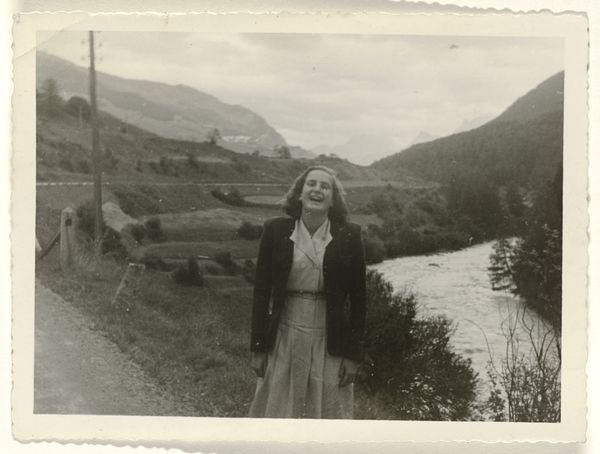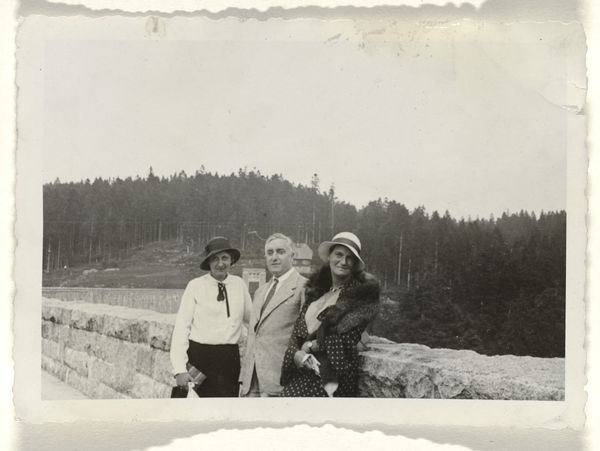
Isabel Wachenheimer gezeten op een steen in een berglandschap bij een informatiepaal met daarop een waarschwuing om planten en de natuur met rust te laten 1956 - 1973
0:00
0:00
photography
#
portrait
#
landscape
#
photography
#
historical photography
#
realism
Dimensions: height 75 mm, width 100 mm
Copyright: Rijks Museum: Open Domain
Editor: This photograph, simply titled "Isabel Wachenheimer gezeten op een steen in een berglandschap bij een informatiepaal met daarop een waarschwuing om planten en de natuur met rust te laten" and dated between 1956 and 1973, shows a woman sitting on a rock, with a somewhat faded, dreamy quality. What do you see in this piece that perhaps I’m missing? Curator: I see a powerful commentary on the intersection of individual identity and collective responsibility. Look at how Isabel is positioned in relation to the landscape and that sign. It's not just a pretty scene; it's a statement about our relationship with nature, a quiet defiance. Who dictates who belongs, who sits where, and what voices are amplified? Consider the historical context – postwar, a rebuilding Germany grappling with identity. Do you think that adds another layer to how we might read the photograph's environmental message? Editor: It does. So you're suggesting Isabel's presence is almost a challenge to prescribed roles, or even an assertion of self? Curator: Exactly! The warning sign to respect the flora gains deeper meaning. Is it simply about environmentalism, or a broader plea for respect? Whose plants, whose nature are we talking about protecting, and from whom? Think about how social and political movements from that period engaged with these questions of access, ownership, and protection. Editor: That reframes it entirely for me. I was just seeing a woman in nature. Now I see a subtle act of claiming space, both for herself and perhaps for a more inclusive idea of who "belongs" in nature. Curator: Precisely! It’s about acknowledging the multiple narratives that exist in a single frame. Hopefully, the experience also prompts you to think how these photographs participate in both documenting and shaping history. Editor: Definitely. I’ll never look at a landscape photo the same way again.
Comments
No comments
Be the first to comment and join the conversation on the ultimate creative platform.
